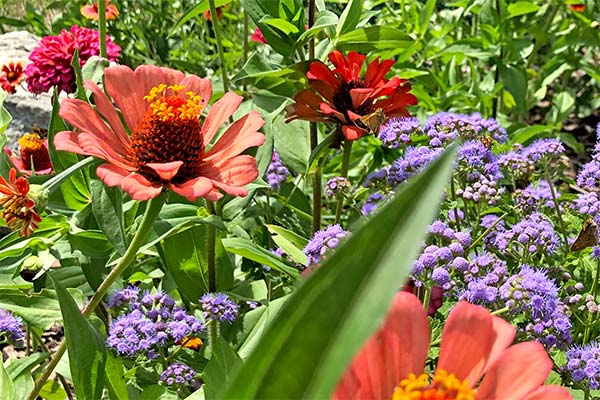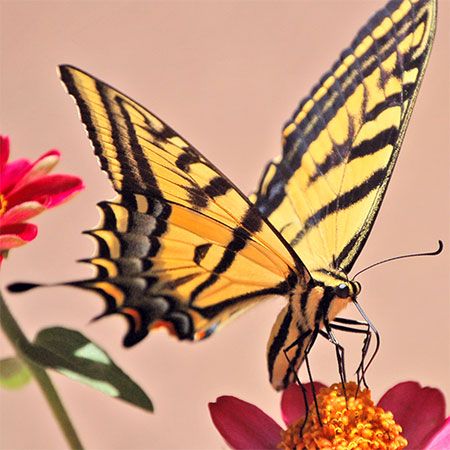Our butterfly population is declining and becoming increasingly more at risk every year. A study published by the journal Science last year found that there has been a 1.6% annual reduction in the number of individual butterflies observed over the past four decades, after studying over 70 locations in the United States.
This is a very real problem that should concern everyone, so adapting our backyards to make them more appealing to butterflies is a fairly easy solution. We might already consider our backyard care to be eco-friendly, but there are always more things we can do to accommodate butterflies. The more people who are willing to help, the better chance we have of saving our butterfly population.
Plant Plenty of Flowers
Butterflies feed on nectar, so one way to encourage lots of butterflies to visit your backyard is to plant plenty of flowers. It’s a fact that butterflies have a heightened sense of smell, and they can spot colors from afar, so planting lots of fresh, bright, and fragrant flowers is the perfect way to turn your backyard into a butterfly garden.

More flowers will also attract the local bee population to your yard, allowing you to support two vulnerable insect communities in one space. During winter, you can still plant and grow flowers, like winter pansies, so that the butterfly population has somewhere to feed all year round. Planting more flowers also has the aesthetic benefit of brightening up your backyard.
Sustainable Backyard Cleaning
Our backyards can become very easily overgrown and wild, but you should try to avoid using herbicides to get rid of weeds and other excessive greenery because these are deadly to butterflies. In fact, research by toxicologist John Stark in 2012 proved that three commonly used herbicides can dramatically reduce butterfly populations. These herbicides are imazapyr, triclopyr, and sethoxydim, so they should be avoided at all costs.
You should try to cut back growth in your backyard using garden shears and then recycle the waste, though leaving a little bit of grass growth in some areas can actually help to attract more butterflies. If you need to wash any stone paths or patio areas, use water and a scrubbing brush instead of harsh chemicals. An eco-friendly cleaning process is kinder to both butterflies and your garden.
Ensure Sunny Spaces
Butterflies love being in the sun, so try to ensure that your backyard is not massively shaded. Plant flowers and other plants in the sunniest, most exposed spots as these will be preferable for butterflies. Butterflies take warmth from sunshine by spreading their wings and allowing their capillaries to absorb it.
If butterflies feel comfortable resting in your garden, especially on your flowers, they will continuously return. If your yard is quite shaded, focus all your energy on cultivating the unshaded spots for butterfly activity. It is very eco-friendly to work outdoors routinely and you’ll find the work rewarding.
Leave Fallen Fruit and Wet Patches
Though butterflies primarily feed on the nectar from flowers, some species enjoy feeding on the sugar found in fruit as well. Having a fruit tree in your backyard in summer is a sure way to attract even more butterflies, especially if you don’t remove the fallen fruits from the ground around the tree.
Don’t worry if the fruit is starting to rot because butterflies will still feed on it, which also helps to tackle the problem of food going to waste. As for water, it can be as simple as providing a shallow mud puddle or a moist bucket of sand. Butterflies will happily hydrate themselves that way, and regularly watering your lawn will also leave some excess drops for the butterfly community.
The continued survival of our butterfly population should be one of our biggest priorities. Statista reported in 2019 that over half of the world’s butterflies have died over the past decade. If we don’t act fast, that number will only continue to grow until all species of butterfly are either endangered or extinct.
Doing your part is as simple as taking an eco-friendlier approach towards your own backyard and turning areas into ideal spaces for butterflies. By protecting our local butterfly communities, we can help to promote the protection of butterflies worldwide.





